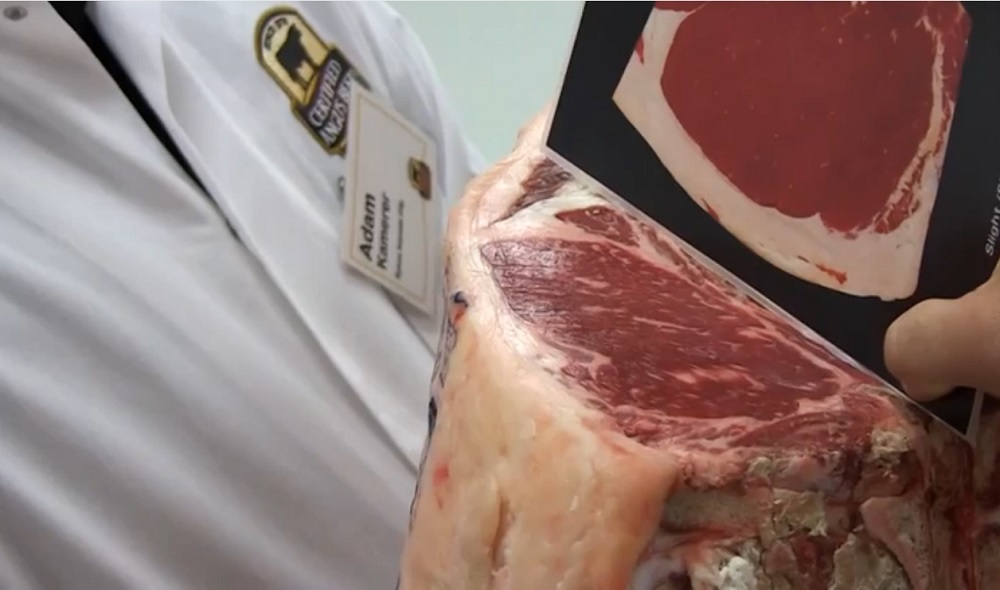
Agricultural News
Premiums for CAB Qualifying Beef Keeps Growing, Motivating Producers to Raise More Quality Beef
Thu, 20 Jul 2017 12:23:25 CDT
 Quality cattle are so commonplace they're no longer worth a reward, right? Wrong.
Quality cattle are so commonplace they're no longer worth a reward, right? Wrong.
The market still pays more for the best, even as supplies grow. USDA data for the first half of 2017 puts the average Certified Angus Beef ® (CAB®) brand grid premium at $4.73/cwt., on track to exceed $50 million for the year.
CAB acceptance rates of nearly 30%, compared to typical historic rates of 17% to 18% may drive perceptions that market premiums have dried up. Numbers show that's not the case.
"Our tonnage keeps setting records this year with 10% or more greater supply, but the average reported premium to producers is almost a dime above last year's first half," says Paul Dykstra, beef cattle specialist for the brand.
In fact, June 19th brought an all-time high for CAB premiums as USDA's Mandatory Price Reporting showed one packer paid a record $14/cwt. It would be remiss not to acknowledge that a big-box retailer entered the premium Choice beef market this spring. While details of that product and specifications are unclear, there is little doubt the added demand contributed to higher premiums across the category.
Those premiums fade seasonally going into summer, but they aren't going away.
"The fact is, there are still premiums and they're still worthwhile," Dykstra says. "CAB is leading the charge and there's money to be made."
Predominantly black, Angus cattle eligible for CAB made up 67.5% of the fed-cattle supply in June, compared to just 63.5% a year ago.
That's certainly not evidence of oversupply or lack of demand, Dykstra says. "The record premiums for CAB occurred while the Choice-Select spread was trending extremely wide as well, creating a huge gap in price as we measure quality across Select, lower Choice and CAB."
"I'd say it's driven by demand," says John Nalivka. The president and owner of Oregon-based Sterling Marketing says while 2017 total beef production and harvest are up 4% and 6%, respectively, beef expenditures were down as recently as May.
"That increase in available supply doesn't carry much weight in the world of consumer preference," he says. "When you break it down to what consumers want to buy, it narrows that supply quite a bit."
Demand is strong for well-marbled cuts, Nalivka says, but not for all beef: "As retail expenditures would suggest, demand exists for certain quality components of the entire beef supply."
That's reason enough for producers to keep aiming for quality, selecting cattle that excel in carcass and growth.
"Genetically, and from the standpoint of production, we're good at raising cattle in this country," Nalivka says. "Nobody else in the world can compete with us when it comes to grain-finished cattle."
People want a safe product that was raised with humane standards, he says.
"They want to know that when they buy that $10 steak and have their friends over for a barbecue in the backyard, they're not going to be disappointed. They don't want any guesswork and there's value in raising cattle that fit that," Nalivka says.
Hearing from feedyards and packers alike, he says, "It's important to pay attention to what's going on in the market."
Culling the bottom end of the U.S. cow herd led to a herd that can produce 80% or more Choice beef, which pressures Select numbers down. Yet, demand for quality supports the better grade, creating a wider Choice-Select spread as the two move in opposite directions.
The price signals move down the chain as packers preferred buying only the higher quality cattle this spring, motivating feedyards to become pickier about which calves they purchase.
"Feeders know what it's going to take and therefore are more selective," Nalivka says. "That's where this whole thing goes full circle for the rancher because it tells you that you're probably going to get paid for quality, particularly reputation feeder cattle that fit that demand between the feedlot and packer."
Still, ranchers must raise the cattle that fit their cost structure and intended market, he says.
"You have to have the right cattle for the right market. We have a lot better herd for producing the kind of cattle consumers want and, when you realize there are still premiums out there, you are going to have to produce for that. I think the standard for getting the greatest value has been set and there's no going back now."
Source - Certified Angus Beef
WebReadyTM Powered by WireReady® NSI
Top Agricultural News
More Headlines...





